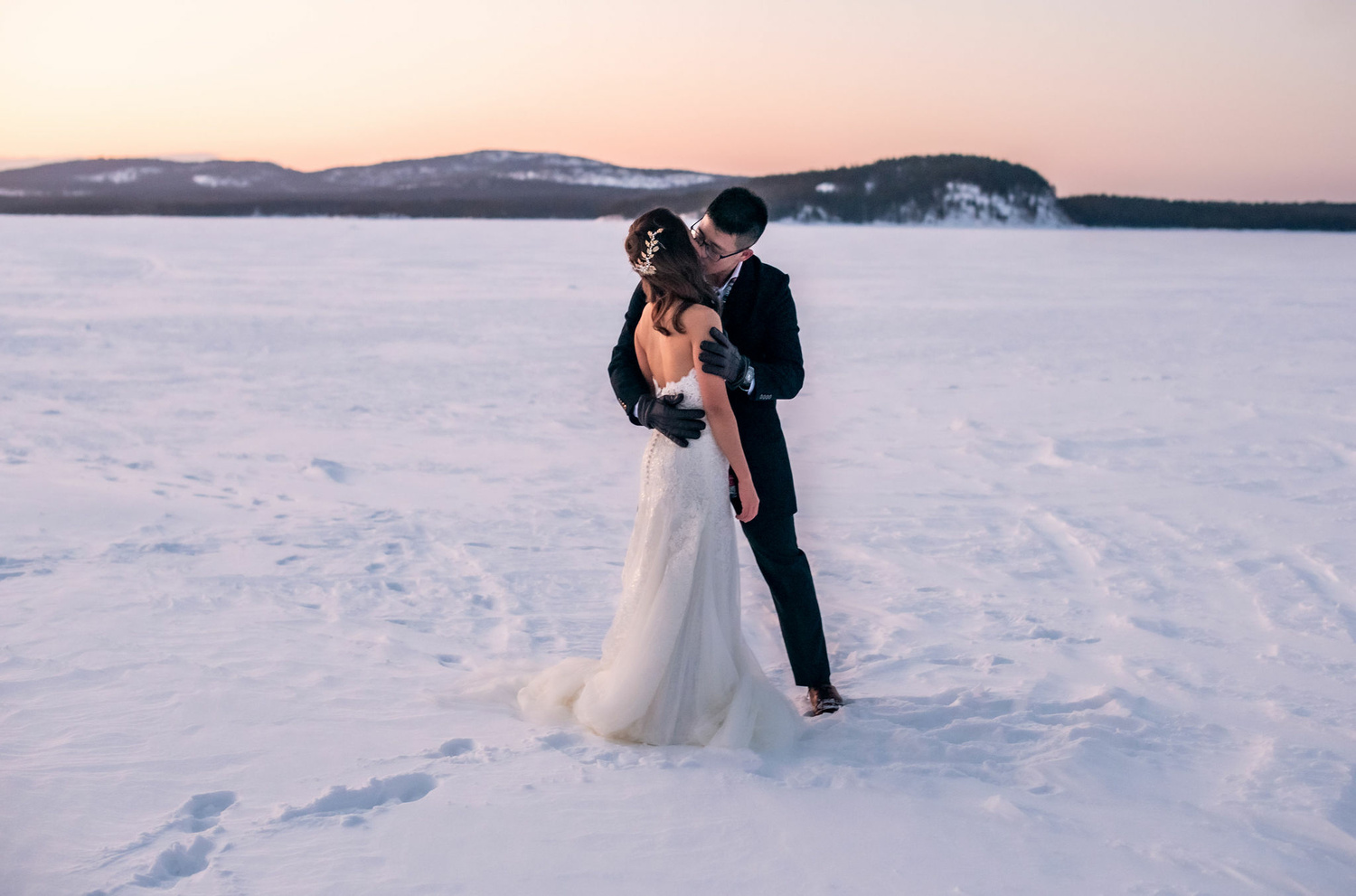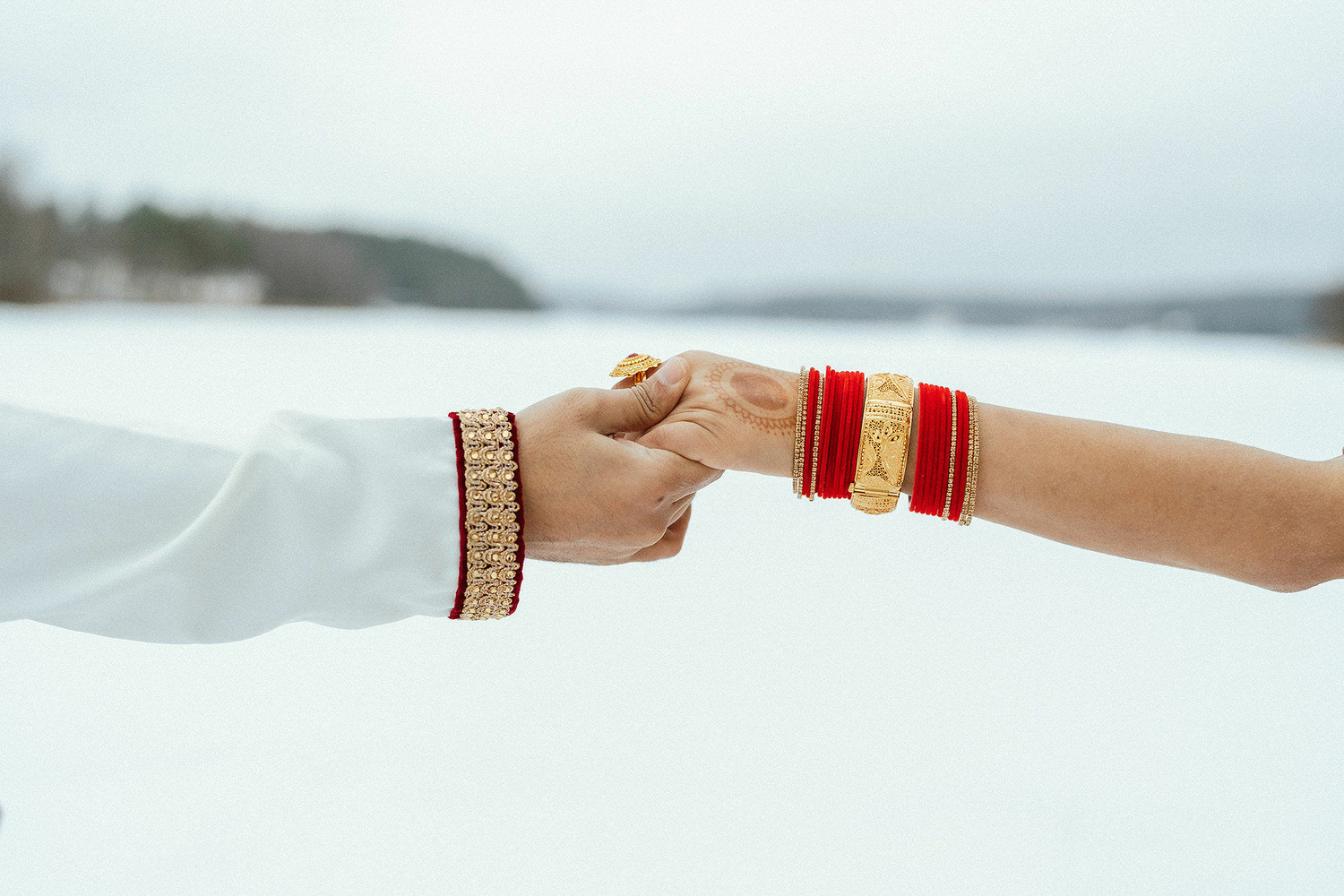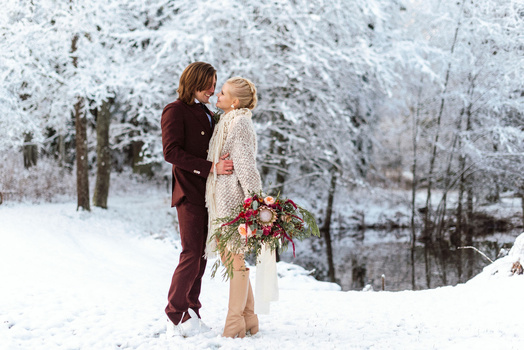The wedding season typically runs in the summer months in most countries. However, winter wedding photos can look magical if done right. I spoke to Finnish photographer Lauri Hytti about his experiences and tips on how to master shooting the perfect snowy scene.
I have shot my fair share of weddings. However, it is not what I specialize in. I am from Northern Europe, though, and my recent visit there made me wonder how Scandinavian photographers tackle the snowy scenery and short days. I spoke with my friend and wedding photographer, Lauri Hytti, on how he approaches wedding photography during the cold winter months. He is based in Helsinki, Finland and has been shooting weddings since 2014. Check out his website here.

What Are the Key Differences Between Shooting Winter Weddings and Summer Ones?
Lauri: The amount of light and the quality of it. The main issue is that the days are very short in the winter. In November, in the north of Finland, there is a humorous newscast saying how the next time the sun will rise is the following February. Saying that, in the brief moments of daylight, the quality is usually soft and flattering, and it can be utterly magical! On the other hand, during the summer, the sun doesn’t set at all. This means you can shoot at 2 am without any extra light at all, and on a bright day, you will have almost 10 hours of harsh, bright light.
Furthermore, you also have to take into account the temperature differences during winter. It can be way down to -30 °C (-22 °F) outside, and bringing your equipment indoors will create condensation. More importantly, your couples might not be too excited to spend long periods outside in the freezer-like temperatures. Even if they are super troopers having a blast, it’s quite hard to fake not being cold, and it shows in the final results.
Most of the time, when the temperature isn’t extremely cold, the differences can be minor compared with summer weddings. Yes, the days are shorter, but it simply means planning out the portrait shoot at a certain part of the day.

How Does Your Winter Shoot Preparation Differ From the Summer?
The weather in Finland can be pretty unpredictable throughout the year, hence checking out the weather forecast is as important as any other time of the year. The major difference is communicating to my clients what sort of images can be created at what times of the day because of the temperature and lack of light. I shoot with multiple cameras and make sure I keep one camera always indoors. This is because of condensation problems. I make sure to take extra spare batteries, which is always a good idea, as cold can drain energy much more quickly than you’re used to.
What Are Your Top Tips To Capture Unique Details in a Typical Winter Wedding?
It all comes down to how playful and adventurous the couple is. If the couple like to have fun in the snow, it’s guaranteed to create memorable shots. If those kinds of shenanigans aren't the couple's thing, just a wander in the winter wonderland will create a beautiful moment. Also, backlighting snowflakes is always a great way to bring them out and create magic.

How Do You Make Sure Your Equipment Works in the Cold?
Naturally, I test out the gear beforehand in the cold to see how it copes. It is so that I know how long the battery will last and at what sort of temperature the electronics start to slow down. To be honest, at weddings, it is unlikely that you will spend such long periods outdoors that either of these will become a major issue. On elopements, it can happen.
The main problem is condensation. After being outdoors at a cold temperature, your equipment will fog up when you jump back indoors to room temperature. The biggest mistake would be to pop out again with the same equipment, as the condensation will freeze and potentially break your equipment. As such, it’s a good idea to have a spare camera with necessary lenses indoors at all times. That way, when you pop back in, you can just pick up the other camera and carry on shooting. Also having a set of spare batteries inside of your jacket pocket will keep them warmer longer due to your body warmth.
It Gets Dark Very Early in Finland in the Winter. How Do You Work With That?
I plan out the portrait shoot and, if possible, any other bridal party and family photos for the brightest part of the day. Modern cameras are very forgiving with their ISO performance. You can easily push it to 6,400 and see little deterioration in the quality of the photo. I still make sure that I am exposing my shots properly and using the available light well. The higher the ISO, the less forgiving the files become, and you lose the opportunity to fix them later.
For most of the day, I will be working with the ambient light at the indoor locations and, when necessary, with extra flashes. I personally keep extra lights to the minimum until the dance floor if possible. Often, during speeches, I will use external flashes to bring some depth to the images if it isn’t too distracting to the vibe and space.
At the end of the day, I am there to document the event in the best possible way. I find the couple’s enjoyment to be more important than perfectly lit images, so each time, it’s a judgment call whether to shoot without adding flash, as it can be a distraction.

How Do You Advise Those With No Experience Shooting in the Snow?
Each camera and exposure mode has a different way of handling highlights and shadows, but with digital cameras, they handle lifting shadows better than saving highlights, so the whites of the snow aren’t a huge issue, as your camera will more than likely underexpose the whole image, as most of it is white.
Saying that, I generally expose a stop higher than the camera meters as a starting point. I shoot with manual settings so I don’t need to rely on the camera's metering. I tend to expose for the person’s skin when shooting a close-up portrait. When shooting more of the landscape, I make sure not to blow the highlights.

What Are Your Most Memorable Moments in a Winter Wedding?
A couple from Asia had never been in temperatures much below 20 °C (68 °F) and we were in Lapland, north of Finland. It was -15 °C (5 °F), but with the wind, it felt well below -30 °C (-22 °F). I was covered in proper winter gear, thinking to myself that I was freezing to death. All the electronic features stopped working on my camera (Nikon D850), though the shutter still worked. That’s how cold it was. And still, the bride was smiling at me and enjoying the moment with her hubby. That was some incredible dedication. The bride admitted she had never been that cold in her life. It was all worth it.
Closing Thoughts
Thank you, Lauri, for your insights. Shooting more winter weddings could be a great way to extend the wedding photography season. The more beautiful wedding images are out there, the more couples might decide to go with a (brave) winter wedding. Lapland sure makes an unforgettable destination wedding location. Here is a summary of what we’ve learned here today:
- It gets dark: set expectations with the couple on when to shoot the portraits and family shots if daylight is desired.
- It gets cold: plan outdoor shots with the couple well so that you can be fast.
- Keep one camera inside and another body out to avoid issues with condensation.
- Keep batteries warm in your coat pocket, and take extra on top of extra as the cold drains them more quickly.
- Explore backlighting snowflakes.
- Dress warm.
Images used with permission of Lauri Hytti.












